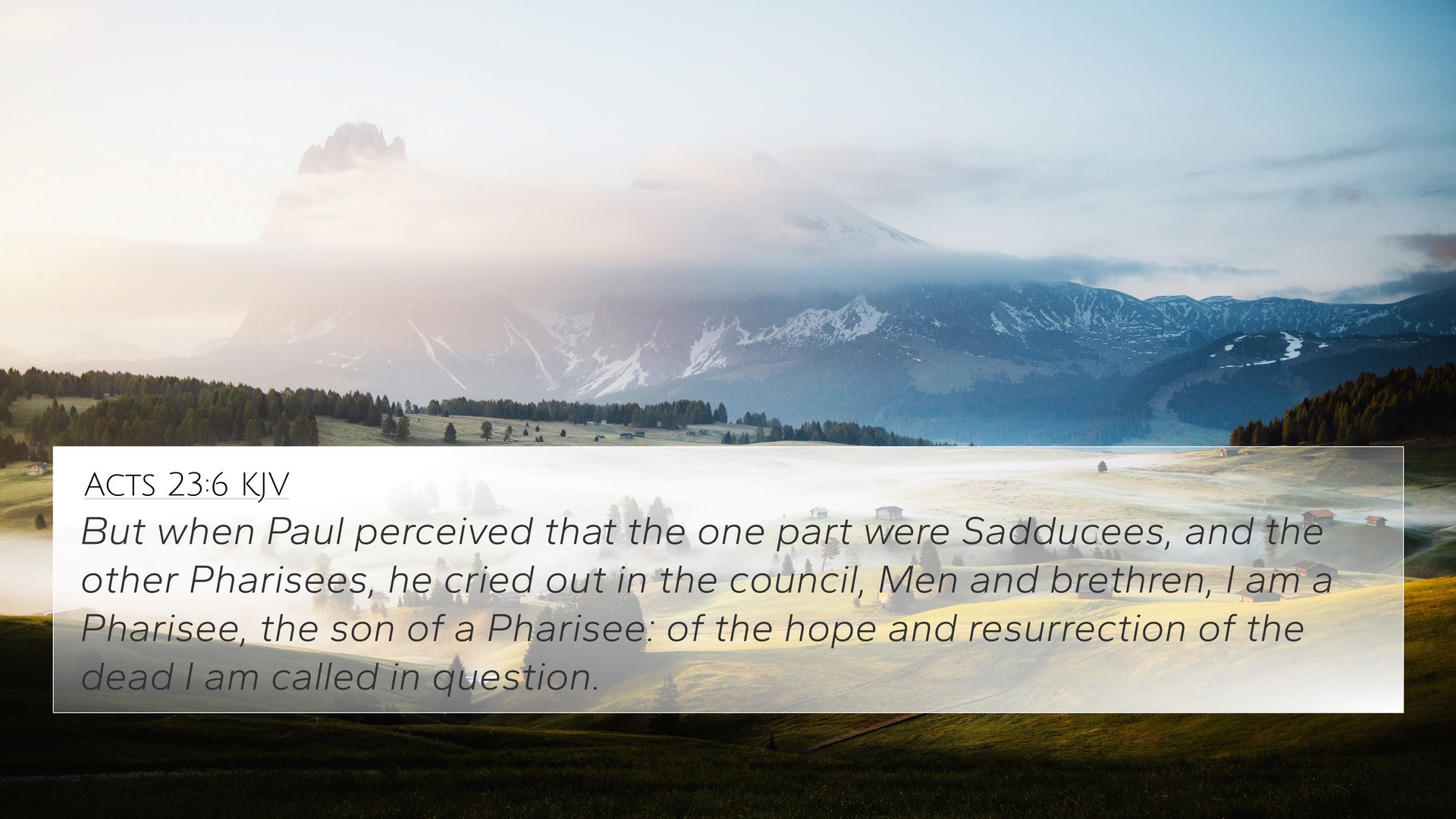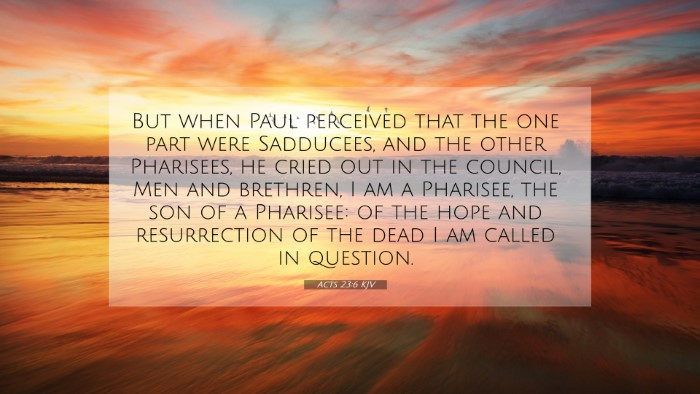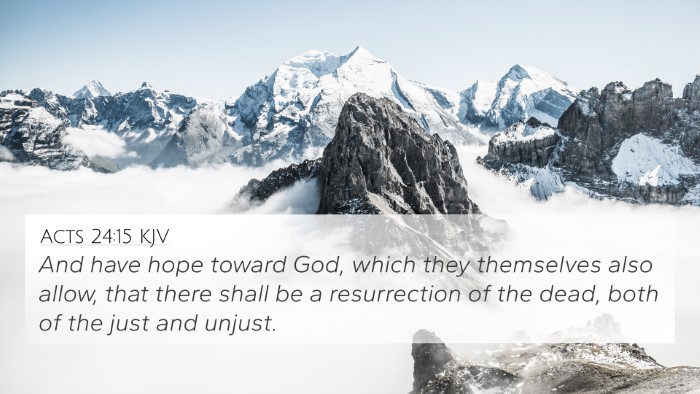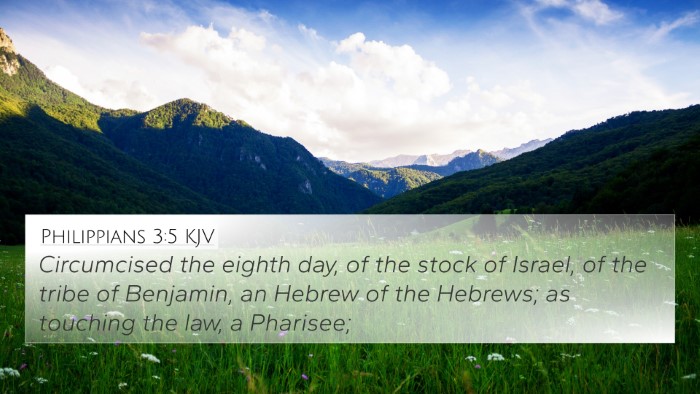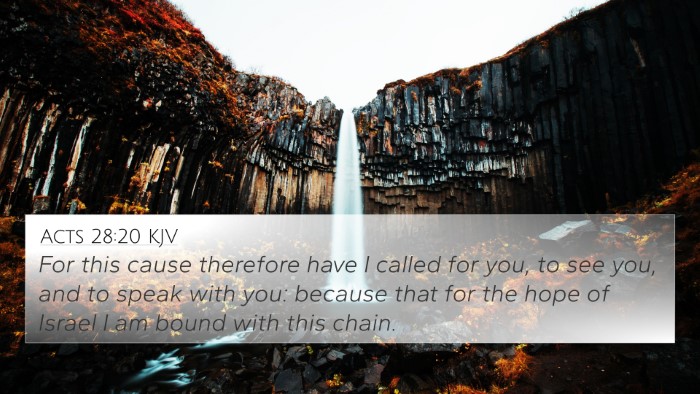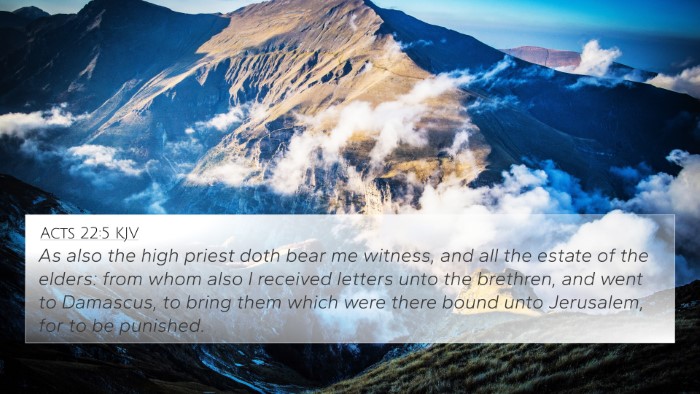Understanding Acts 23:6
Acts 23:6 states, "But when Paul perceived that one part were Sadducees and the other Pharisees, he cried out in the council, Men and brethren, I am a Pharisee, the son of a Pharisee: of the hope and resurrection of the dead I am called in question." This verse offers profound insight into Paul’s wisdom in navigating his precarious situation before the council.
Context and Background
This moment occurs during a critical point in Paul’s ministry where he stands before the Sanhedrin, a ruling council made up of the Pharisees and Sadducees. The Sanhedrin represents two conflicting theological camps, with the Pharisees believing in the resurrection of the dead, while the Sadducees rejected this doctrine entirely. Understanding this conflict is crucial in interpreting Paul’s strategic declaration.
Interpretation and Insights
According to Matthew Henry, Paul utilizes his identity in a way that indicates his understanding of the council's divisions. By proclaiming himself a Pharisee, Paul not only aligns himself with a group that maintains a belief in resurrection but also shifts the focus of the debate. This clever maneuver highlights his ability to discern the dynamics at play, allowing him to face his adversaries with wisdom.
Albert Barnes emphasizes the significance of resurrection in Paul's appeal. By identifying with the Pharisees, Paul underscores the hope of resurrection that he champions throughout his apostolic work. This also sets the stage for him to elaborate on the core of the Gospel, which centers around Christ's resurrection.
Adam Clarke points out that Paul’s declaration serves a dual purpose: it offers him a safeguard and creates a division among the council. It showcases how theological beliefs can ignite contention, yet it also demonstrates Paul’s skillful communication—a model for how to engage in difficult discussions.
Cross-References and Thematic Connections
Acts 23:6 connects with several other scriptures, providing a broader understanding of the themes of resurrection, identity, and theological disputes:
- John 11:25-26 - Jesus emphasizes the resurrection and the life, reinforcing the hope that Paul stands for.
- 1 Corinthians 15:12-22 - Paul discusses the resurrection of Christ, an essential belief aligned with the Pharisaic doctrine.
- Philippians 3:5-11 - Paul identifies himself as of the lineage of the Pharisees, explaining his legalistic background to contextualize his faith journey.
- Matthew 22:23-33 - Jesus confronts the Sadducees about their denial of the resurrection, establishing the theological divide present in Acts 23.
- Luke 20:37-38 - Jesus' affirmation of the resurrection highlights its significance in the disciples' teaching and consequently in Paul’s defense.
- Acts 24:15 - In later chapters, Paul reiterates his belief in the resurrection, showing consistency in his message.
- Acts 4:1-2 - The apostles face similar conflicts due to their preaching on Jesus' resurrection, fostering early Christian identity.
Conclusion
In conclusion, Acts 23:6 not only reveals Paul as a strategic thinker but also showcases the underlying theological tensions of the time. His ability to align himself with the Pharisees speaks volumes about the early church's challenges in preaching the resurrection of Christ amidst opposing views. This verse, along with its cross-references, invites deeper reflection on the intersections of identity, belief, and the hope of resurrection in Christian doctrine.
Further Study and Cross-Referencing
For those exploring more about Acts 23:6, the following can enhance your understanding:
- Tools for Bible Cross-Referencing: Utilize a concordance or cross-reference guide to explore related verses.
- Bible Study Methods: Employ cross-referencing Bible study techniques to trace themes and ideas.
- Comparative Studies: Compare the Pauline epistles to identify recurrent themes regarding resurrection.
- Inter-Biblical Dialogue: Engage with texts from both Old and New Testaments to deepen theological understanding.
